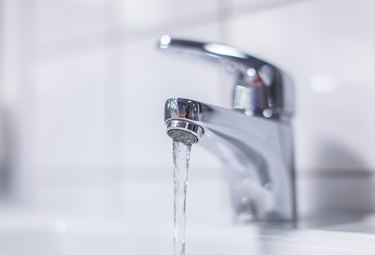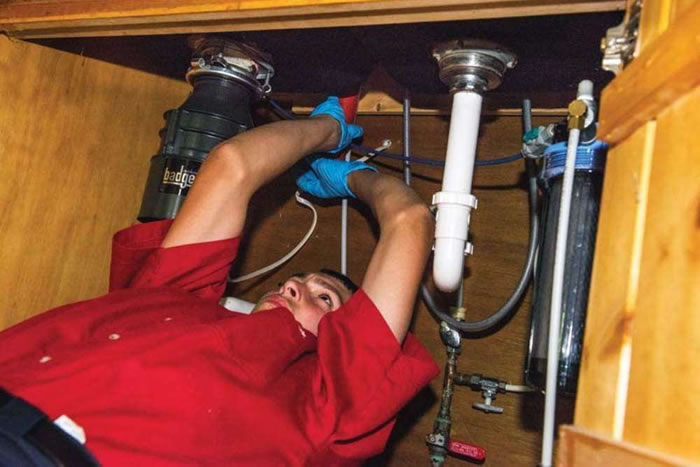Efficient Tips for Tackling Low Water Pressure in Your Home
Efficient Tips for Tackling Low Water Pressure in Your Home
Blog Article
This post following next pertaining to Low Water Pressure in the House? is without a doubt intriguing. Don't miss it.

Low tide stress in your house can be an aggravating issue, influencing every little thing from bathing to washing recipes. If you're experiencing weak water flow, there are a number of feasible reasons and remedies to check out. In this guide, we'll review typical factors for low water stress and sensible actions to deal with the concern efficiently.
Introduction to Low Water Pressure
Low water stress happens when the flow of water from your faucets, showers, and various other fixtures is weaker than common. This can make daily jobs much more difficult and much less effective. Recognizing the root causes of low tide stress is vital to finding the best option.
Usual Causes of Low Tide Stress
Faulty Pressure Regulatory Authorities
Pressure regulators are accountable for preserving consistent water stress in your house. If they malfunction, it can lead to low tide pressure or uneven circulation throughout your home.
Community Supply Of Water Issues
In some cases, the trouble lies outside your home. Municipal water system issues, such as main line leaks or upkeep job, can temporarily minimize water pressure in your location.
Pipeline Obstructions
Gradually, pipes can end up being obstructed with mineral deposits, sediment, or particles, limiting the circulation of water. This is a common issue in older homes with galvanized steel pipes.
Corrosion
Rust within pipes can lead to leakages and decreased water pressure. Corrosion buildup can tighten water flow, particularly in aging plumbing systems.
Exactly How to Detect Low Water Stress
Checking Pipelines
Examine noticeable pipes for signs of leaks, corrosion, or blockages. Take note of any uncommon sounds, such as knocking or rattling pipelines, which can indicate concerns within the plumbing system.
Consulting with a Plumber
If you're not able to pinpoint the source of low tide stress, think about employing a professional plumber to perform a thorough assessment. They can identify underlying problems and recommend ideal services.
Inspecting Faucets and Fixtures
Beginning by testing the water stress at various faucets and components throughout your home. If the problem is isolated to details areas, it might suggest local issues.
Do It Yourself Solutions to Fix Low Tide Stress
Flushing Water Heater
Debris accumulation in the hot water heater can restrict circulation and decrease performance. Purging the tank regularly helps get rid of debris and preserve ideal performance.
Inspecting Stress Regulator
Make certain that the stress regulatory authority is operating appropriately. Adjusting or changing the regulatory authority can aid bring back correct water stress throughout your home.
Cleansing Aerators and Showerheads
Mineral deposits can build up in aerators and showerheads, minimizing water circulation. Eliminate and clean these elements on a regular basis to boost water pressure.
Clearing Clogs in Pipes
For minor clogs, try making use of a plumbing serpent or chemical drain cleaner to clear obstructions in pipes. Beware when using chemicals and adhere to safety guidelines.
When to Call a Specialist Plumber
If do it yourself initiatives fail to fix the issue or if you think substantial plumbing issues, it's finest to seek assistance from an accredited plumber. They have the proficiency and devices to deal with complicated concerns safely and efficiently.
Safety Nets to Keep Water Stress
Installing a Stress Booster
Take into consideration installing a pressure booster pump to improve water pressure in areas with consistently low circulation. This can be especially advantageous for multi-story homes or properties with high-demand fixtures.
Monitoring Water Usage
Be mindful of water usage behaviors and prevent overtaxing the plumbing system. Simple adjustments, such as staggering showers and washing loads, can assist maintain adequate water pressure.
Routine Upkeep
Arrange regular upkeep for your plumbing system to prevent concerns such as rust, leakages, and blockages. Addressing minor issues early can assist avoid more considerable fixings later.
Final thought
Managing low water pressure can be frustrating, but recognizing the underlying reasons and applying ideal remedies can bring back optimum circulation throughout your home. Whether it's cleaning aerators, evaluating pipes, or speaking with a plumber, taking aggressive actions can guarantee a consistent supply of water for your day-to-day needs.
FOUR WAYS TO FIX LOW WATER PRESSURE NOW
Turning on a shower or faucet only to find the water comes out in a sad, slow drizzle is never a good feeling. How exactly are you supposed to wash a pan or take a quick shower when it takes 10 minutes just to rinse off a little soap? The good news is that when your water pressure is bad, there's always a cause: typically one that can be easily fixed. Here are some of the most common causes of low pressure and what you can do to fix the issue:
DEBRIS AND MINERAL DEPOSIT BUILDUPS
If you notice low water pressure from just one or two of the fixtures in your house, the problem likely has to do with debris buildup. Water is full of minerals and other debris, all of which can accumulate in your pipes and on your fixtures. This can cause a blockage that affects how much water flows through. To fix this, try filling a small plastic bag with white vinegar, and use a rubber band to hang it around your showerhead or faucet. Let the head of the fixture soak for a few hours, and the vinegar should loosen the deposits.
WATER LEAKS
Leaks are another common cause of low water pressure. If water is flowing out of your plumbing through a hole or crack before it can reach your fixture, the pressure coming out of the faucet or showerhead will be lower. A plumbing professional is your best bet for finding and repairing a leak in your water supply pipes.
Leaks are another common cause of low water pressure. If water is flowing out of your plumbing through a hole or crack before it can reach your fixture, the pressure coming out of the faucet or showerhead will be lower. A plumbing professional is your best bet for finding and repairing a leak in your water supply pipes.
A VALVE ISSUE
If you have low water pressure throughout your home, check your main shut-off valve to make sure it's completely open. You may also want to see if there's a pressure-reducing valve installed. If there is, have a plumber help you adjust the settings to get the pressure you're looking for.
OTHERS USING WATER
Believe it or not, your low water pressure could be caused by your neighbors. If you notice low pressure at certain times of day, it may be because you and the people living next to you have similar schedules - when everyone is showering at the same time, the pressure will be lower in every home. Low pressure throughout the neighborhood may also be caused by an issue with your municipal water supply. If that's the case, call the supplier to see if they're working on the issue.
https://www.rotorooter.com/blog/water-leaking/low-water-pressure-fixes/

I ran across that piece of writing on 10 Reasons for Low Water Pressure in Your House when doing a search on the search engines. Are you aware of someone else who is intrigued by the niche? Why not share it. I enjoy reading our article about 9 Reasons for Low Water Pressure in Your House.
Free Estimates Report this page